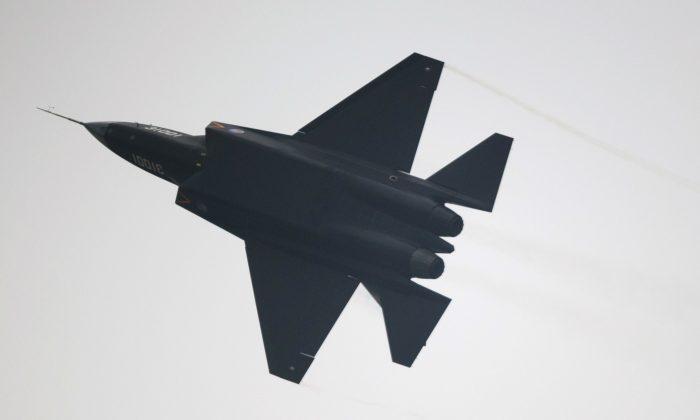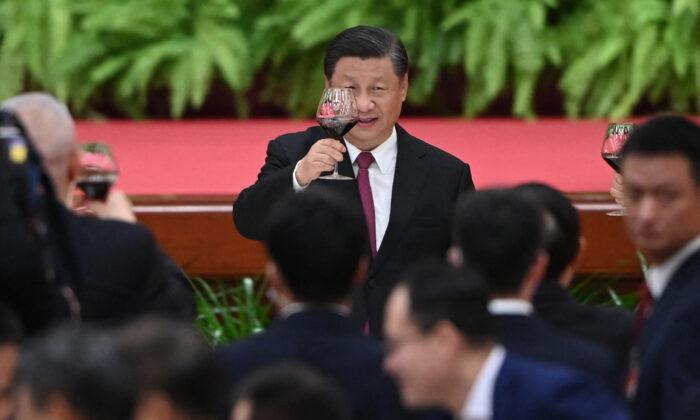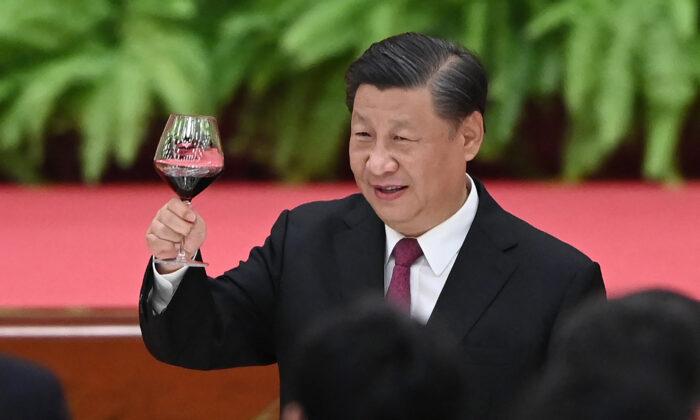In its latest move in the push to develop functioning jet engines, China has just set up a new state-run company with a mission to consolidate the efforts of past manufacturers.
The new firm, called the Aero-Engine Group of China (AEGC), is sponsored by the central government, Beijing authorities, and two existing state-run aerospace companies, Reuters reported on Aug. 28. AEGC was formed with 50 billion yuan (about $7.5 billion) in starting capital.
Beijing has long sought to build engines durable and reliable enough for the demands of its modern fourth- and fifth-generation military aircraft, but industrial deficiency and corruption has hampered this project since it began in the late 1980s.
Chinese leader Xi Jinping described establishing the new firm as a “strategic move,” according to state media.
The creation of the AEGC represents a shift in development strategy, according to Richard D. Fisher, Jr., senior fellow with the International Assessment and Strategy Center. By pooling resources into one firm, China hopes to “vastly rationalize” its aircraft engine sector, he said.
In the past, efforts were split between several industrial businesses and concerns, but results were not satisfactory.
“For a period China may have hoped that competition would lead to progress but that did not happen,” Fisher wrote in an email. “Now China is going to concentrate resources on winners and thus produce progress.”
Currently, the bulk of China’s fighter jets rely on a variant of a Soviet-designed engine, the Saturn AL-31, that is decades old and showing its age. This engine was built for the Su-27 family of Soviet fighters, but China has also used it in its locally-designed J-10 fighter, leading to notable difficulties.

The indigenous Chinese project, which culminated in the WS-10 series of engines, has reportedly left much to be desired in terms of performance, reliability and lifetime, according to Fisher. The most successful iteration of this powerplant is only on par with 1970s American and Russian technology, he says.
There are conflicting views on why China has taken so long to produce a working engine. The design is complex and industrial demands intense, yet China’s manufacturers may have also underperformed.
“In 20 to 30 years time, given the amount of work they have done and the effort they are putting into it, they should have a viable military engine,” Greg Waldron, Asia Managing Editor at Flightglobal, an industry publication, told Reuters.
Whether the new enterprise will be able to solve this problem is far from clear. Issues of quality control, standardization, and work organization and feedback plague complex Chinese industrial projects, and corruption at state and military firms doesn’t help. More centralization of existing engine projects, more capital, and a touch of espionage, may not be enough to offer the breakthrough China needs.
Crippling Bottleneck
For the Chinese air force’s ambitions of building its own fifth-generation fighter that can compete with the American F-22 and the Russian PAK FA prototype, not being able to make an engine adequate even for its fourth-generation jets is an infuriating technological constraint.
For instance, Chinese engines aren’t powerful enough to be used to supercruise, that is, the ability to fly at supersonic speed without afterburners. For a fifth-generation fighter, which relies on stealth to be competitive, this is a huge drawback since a jet with its afterburners on presents a highly detectable target.
After years of negotiations, China struck a deal with Russia to buy two dozen of the Su-35 fighter jet, a significantly upgraded version of the Su-27 that first flew in the 1980s and that serves in the Chinese air force as the J-11. The new aircraft, which is to be delivered this year may be of interest to Beijing because of its advanced AL-411S engine, which was first tested in 2008, Russia Beyond the Headlines, a state-funded news website, reported last December.
China’s efforts haven’t been limited to Russian tech and native industry. In June, a Florida court convicted a Chinese woman for trying to acquire and send fighter jet engines and drones to China, according to the U.S. Department of Justice.
In April, the U.S. authorities revealed that Chinese expat Fuyi Sun was arrested when he tried to purchase advanced carbon fiber, a material with applications in the aerospace and nuclear industry, and send it to the Chinese military.




